The Nine Species Of Tortoises On The Brink Of Extinction
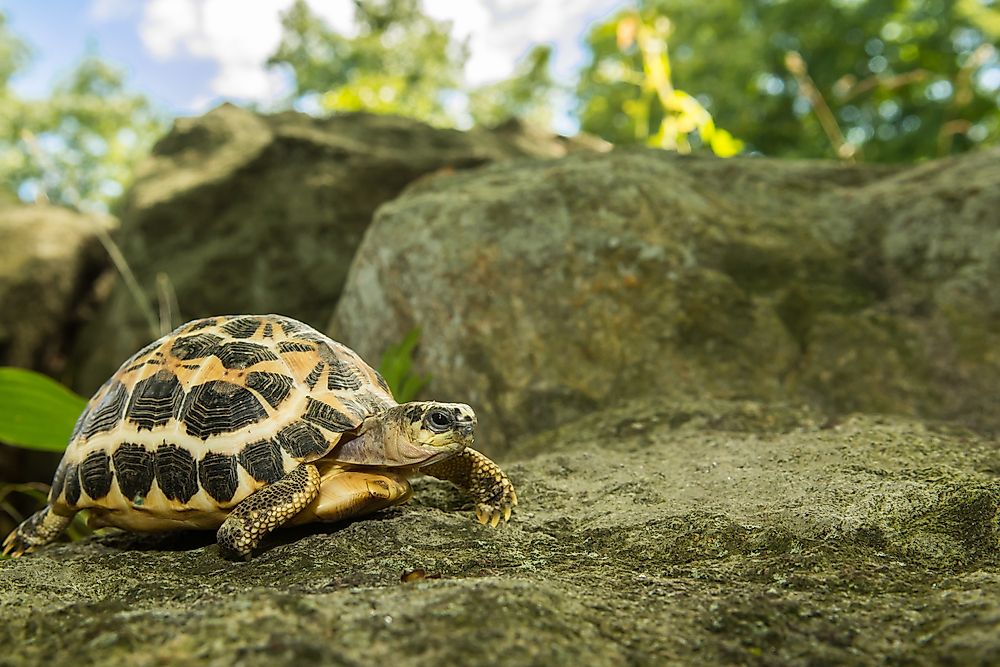
Tortoises are no exception to the thousands of animal and plant species whose survival is threatened by human activities. If not saved in time, several tortoise species might become extinct in the near future. Here is a list of the critically endangered species of tortoises.
9. Angonoka Tortoise
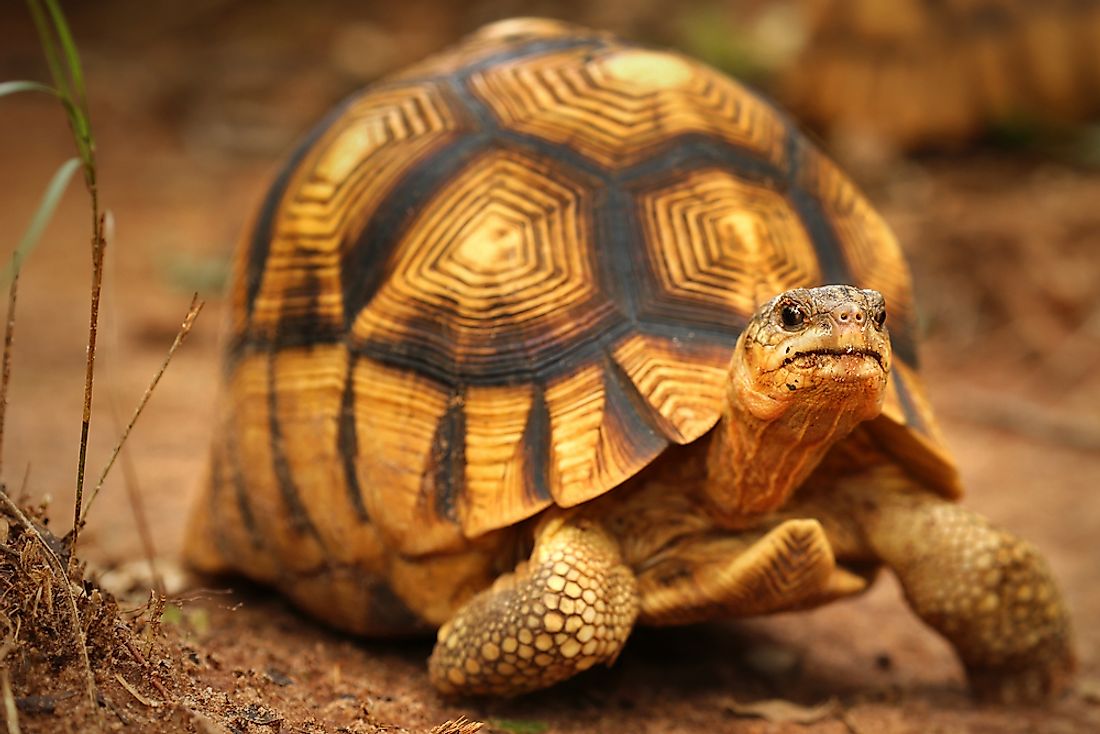
The Madagascar tortoise or the Astrochelys yniphora is a highly threatened tortoise species that is endemic to Madagascar. In the country, the species occurs in the Baly Bay area’s dry forests. There are about 440 to 770 individuals of the species surviving in the wild and the number is rapidly falling. It is estimated that if the drastic decline in the population of this species is not checked, the Angonoka tortoise would soon be extinct. Fires lit intentionally to clear trees for cattle grazing destroys large parts of the Angonoka tortoise’s habitat. The capture of the species for the illegal pet trade and predation by the bushpig are the other major threats to the survival of the species.
8. Radiated Tortoise
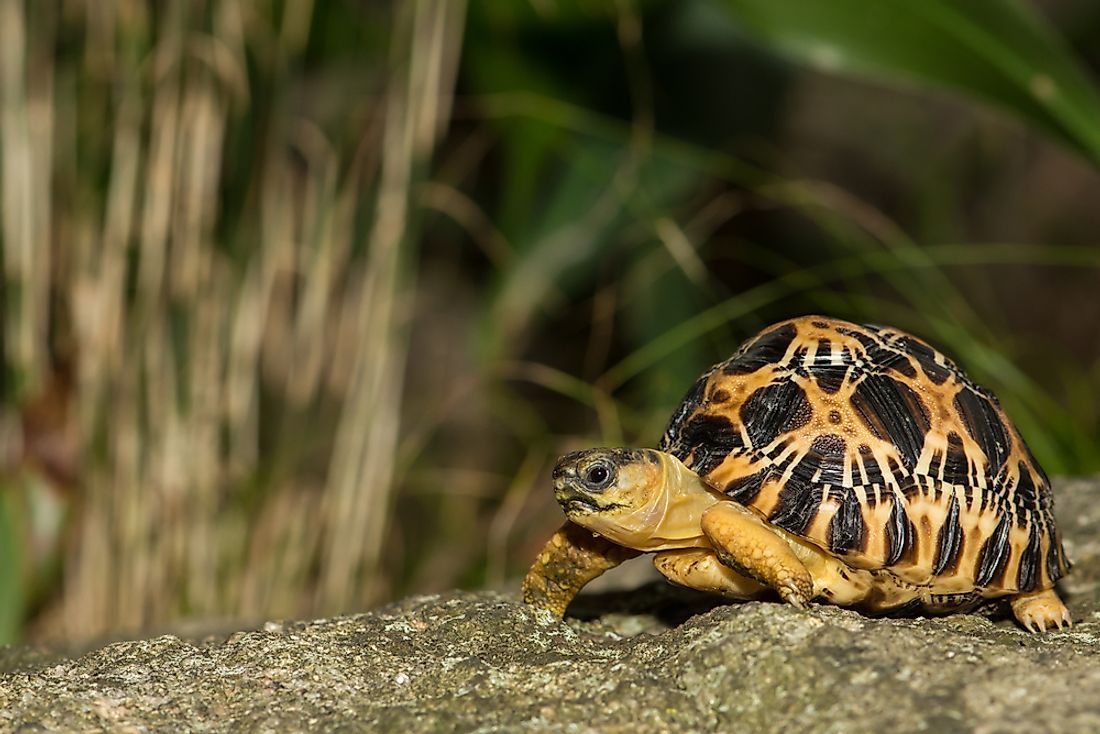
Regarded as one of the most beautiful tortoises of the world, the Astrochelys radiata is native to southern Madagascar but is also found in other parts of the country and in Mauritius and Réunion where it has been introduced. The species has a long life-span of nearly two centuries. Sadly, nature’s gift of a long life to this species has been diminished by humans who indiscriminately hunt, kill, and capture radiated tortoises for commercial purposes. Large numbers of this species are captured for the illegal pet trade. Although the tortoise is protected by law in Madagascar, high levels of poverty prevailing in the country encourage poaching of the species.
7. Burmese Star Tortoise
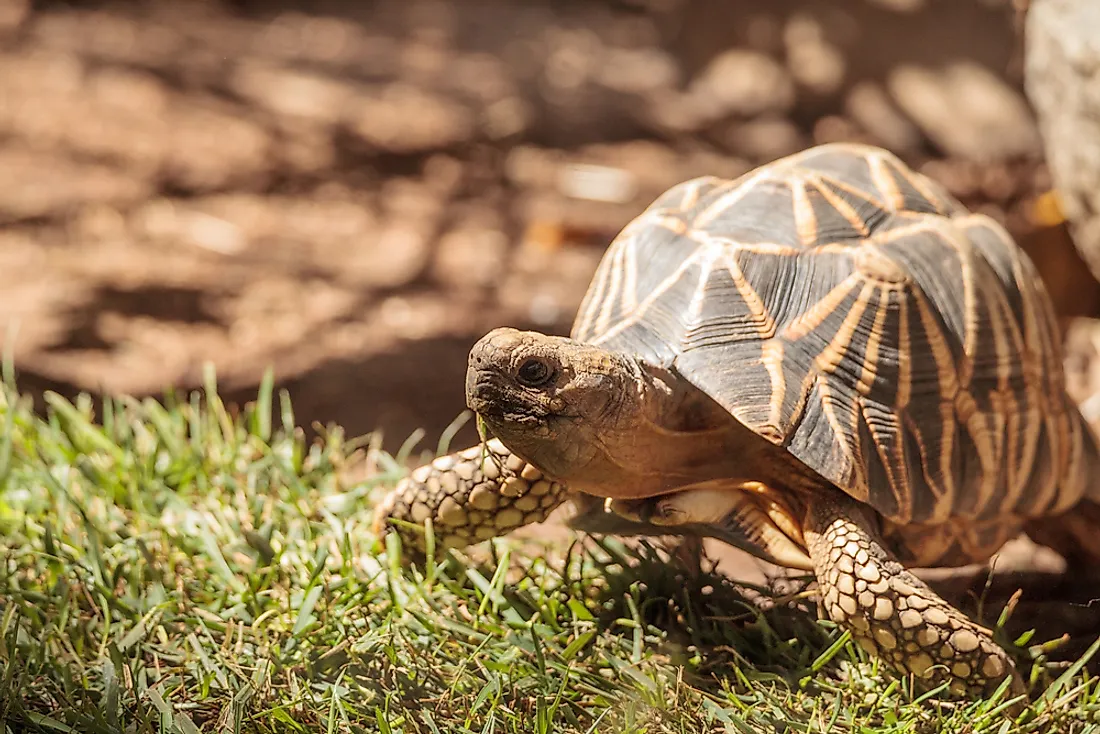
The Geochelone platynota is also a critically endangered species of tortoise. This species is found in Myanmar’s dry, deciduous forests. Sadly, the species is facing extinction. It is consumed as food by both the native Burmese and also traded to China for consumption. A recent search conducted by trained personnel and dogs in the habitat of the species in Myanmar for 400 hours found only four individuals of the species. Efforts have been made to breed the species in captivity but it is a difficult process with a low success rate.
6. Española Giant Tortoise
The Chelonoidis hoodensis is a critically endangered giant tortoise species that is found in the Española Island of the Galapagos Islands archipelago. Only 14 adults of the species were found in the wild in the 1960’s and were captured for captive breeding to save the species from extinction. Following the release of the bred adults into the wild, the population gradually increased to about 770 to 864 tortoises in 2007. Historically, the tortoises were overexploited for human consumption. Also, habitat destruction by overgrazing by the introduced species further depleted the populations of the Española giant tortoise.
5. Geometric Tortoise
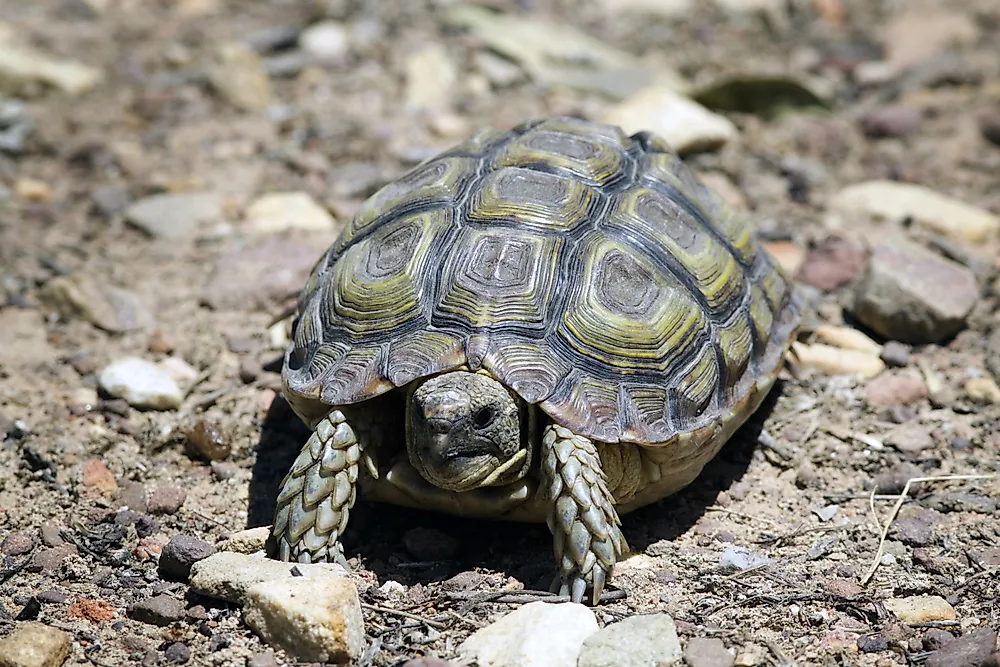
The Psammobates geometricus is found in a very restricted range in South Africa’s South-Western Cape. Although an accurate estimation of the population of the species is lacking, estimates suggest that there are about 2,000 to 3,000 individuals of the species living today. Due to its critically endangered conservation status, the geometric tortoise is protected against poaching by international law. The species depends on native plants for its diet and thus habitat destruction in its range has a highly negative impact on its survival. The rapid growth of non-native plants also depletes the native vegetation of the habitat of the tortoise. This, again, impacts the diet of the species.
4. Spider Tortoise
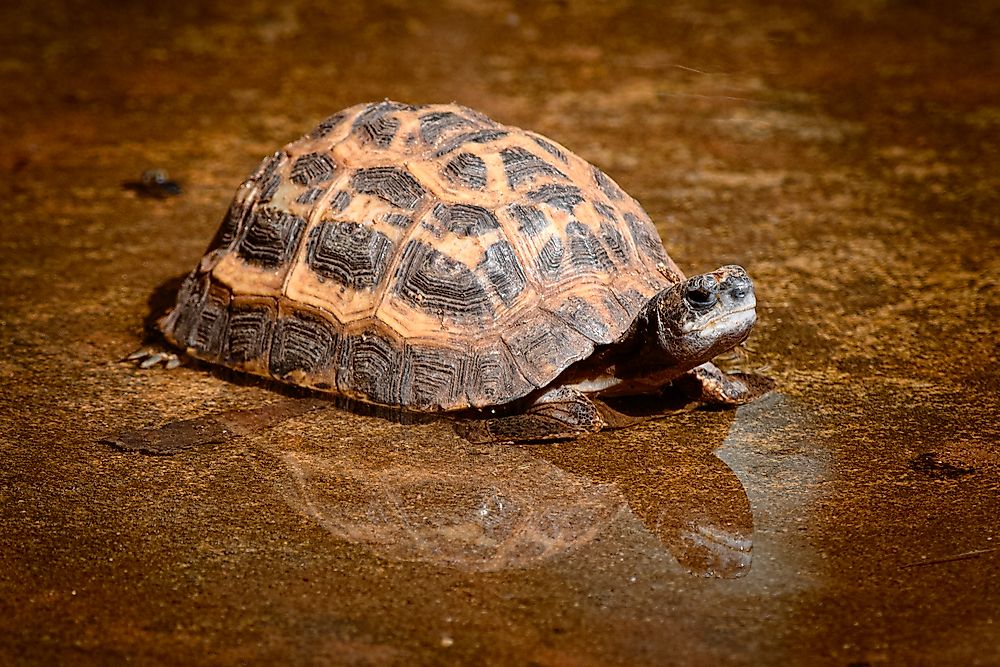
The Pyxis arachnoides is endemic to Madagascar. This critically endangered species had very few surviving individuals. Although historically, the range of the species was vast, currently it is restricted to only southwestern Madagascar. The spider tortoise is killed or captured to be sold for its meat, other body parts, or to be smuggled as exotic pets.
3. Santiago Giant Tortoise
The Chelonoidis darwini in the Santiago Island of Ecuador’s Galapagos Islands archipelago. The island occupies a total area of 585 square km. Although the populations prior to the arrival of humans in the region were estimated to range in thousands, currently the population is extremely small, about a few hundred to a thousand. The species was hunted down to near extinction by settlers and sailors in the past. Currently, the collection of eggs and the introduced plant and animal populations are big threats to the existence of the species.
2. Flat-backed Spider Tortoise
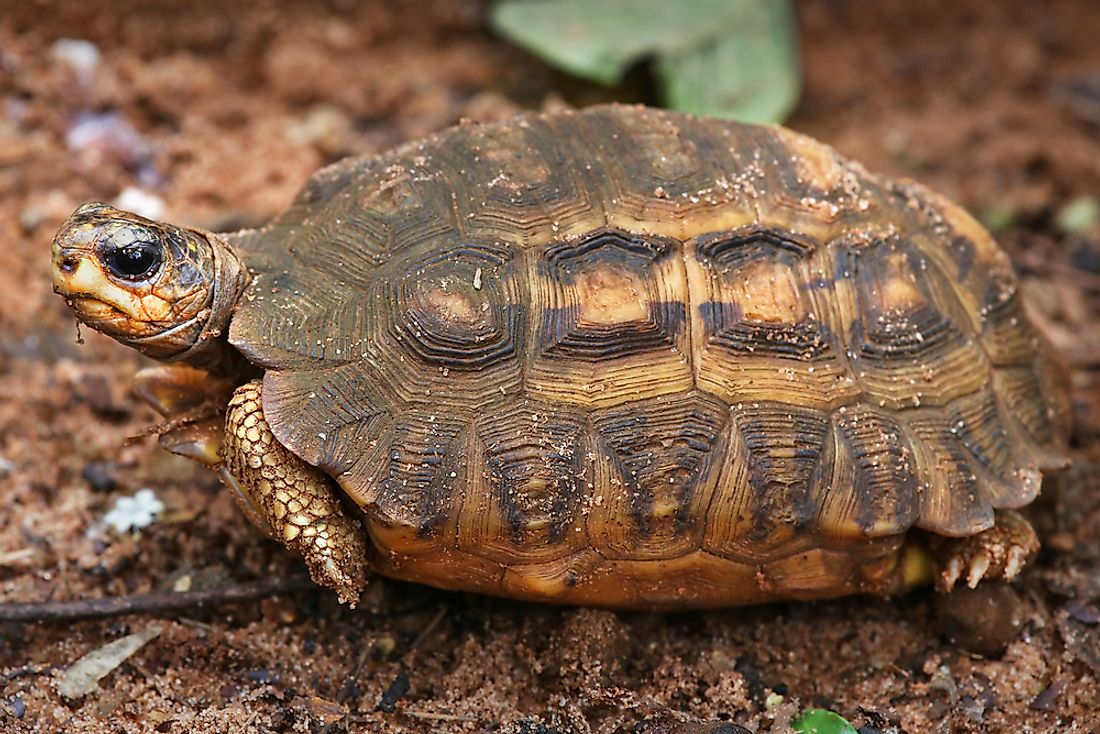
The Pyxis planicauda is also one of the most threatened species of tortoises living in the world today. It is endemic to Madagascar’s west coast where it lives in the highly restricted range between the two rivers of Tsiribihina and Monrondava. Due to its restricted range, the species suffers immediate threat from habitat loss. Deforestation, clearing of land for grazing or farming, mining, petroleum exploration, etc., are some of the activities destroying the habitat of the flat-backed tortoise. Large numbers of these tortoises are captured for the pet trade.
1. Kleinmann's Tortoise
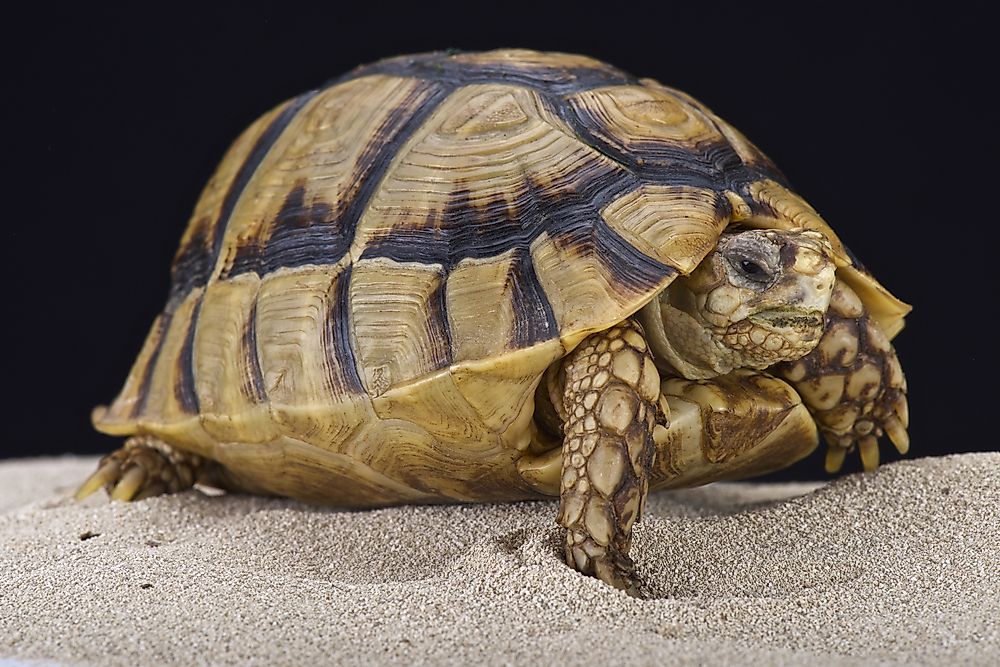
Also referred to as the Egyptian tortoise, the Testudo kleinmanni is a neck-hiding tortoise species. The historical range of this species ran along the Mediterranean coastal strip for a distance of about 90 to 120 km and extended inland into Libya. Currently, the species is nearly extinct from Egypt and small populations exist in Libya. The tortoise is not only hunted locally for folk medicine preparations but is also captured for the illegal pet trade. Loss of habitat is a big threat to the survival of the species.











